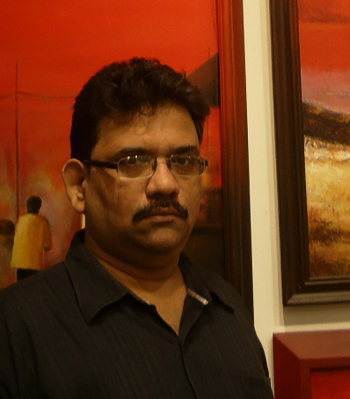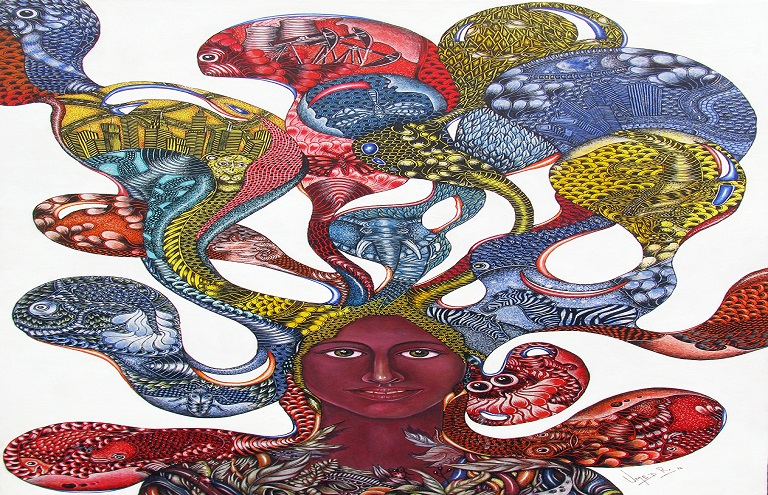
With its imaginative, often dream-like imagery representing the absurd connections of thoughts and ideas, subconscious-inspired subject matter and highly experimental artistic approach, understanding the genre of Surrealism art may seem difficult to grasp. After all, even the intellectual movement's founder, French poet, André Breton, referred to this manoeuvre of the early 20th century as an ‘invisible ray,’ also the iconic Surrealist painter Salvador Dalí quoted that “people love mystery, and that is why they love my paintings.”
However, on exploring its roots, key artists, and well-known surrealism paintings, it becomes clear that a fascinating movement is actually an approachable form of art— one that continues to allure audiences and artists today with its strong belief in the omnipotence of dreams.
The History of Surrealism Art
The movement began in the early 1920s with prominent visual artists like Salvador Dalí, Max Ernst, Man Ray, Joan Miró, and Yves Tanguy at its helm. Rejecting society’s oppressive rationality, they adopted the literary technique of automatism which relied entirely on the subconscious and irrational mind for creativity. It was the French writer and poet André Breton who pioneered and popularized the automatist practices along with other Surrealist writers in Paris, who paved the way for this art form imbued with dream-like texts and Dada-inspired experimentation.
With many seeking liberation from rationalism and complete freedom to express their thoughts in creations, the idea of automatism appealed to them instantly. Thus, it is not surprising that many artists imbibed from similar movements of Cubism, Abstractionism, Expressionism, Post-Impressionism, and worked out a visual approach devoid of any control exercised by reason, and enjoying the absence of aesthetic as well as a moral concern. And hence formally founded the avant-garde Surrealism art.
In addition to experimenting with the tool of automatism and exploring the self-conscious ideas, artists of Surrealism aimed to challenge perceptions and question the visual reality through their paintings. As evident in the famous Surrealism painting of The Treachery of Images by René Magritte. With fascination as its focus, it features only a pipe and the contradictory text: ceci n'est pas une pipe (‘this is not a pipe’). By referring that his depiction is not a pipe but merely a representation of one, Magritte brilliantly plays with interpretation, at the same time drawing attention to the innate deception of art.
Aesthetic Approaches
Most Surrealist artists produced works that exhibit their strong inclination in combining a realistic style with imaginative subject matter. This paradoxical artistic approach is particularly evident in the most popular hand-painted dream of Salvador Dali titled, The Persistence of Memory. This Surrealist artwork pairs a lifelike landscape with bizarre iconography, that includes anthropomorphic figures, a barren tree, and the melting clocks.
This fleeting push-and-pull between reality and fancy, dreams is quite perceptible in the oeuvres of René Magritte and Ives Tanguy. The Son of Man, by Magritte, and Indefinite Divisibility by Yves Tanguy, illustrate their interest and ability to simultaneously employ a realistic style, yet a surreal aesthetic approach to subject matter.
However, there were some surrealism paintings that were not painted in the photograph-like style, such as The Elephant Celebes by Max Ernst and The Harlequin's Carnival by Joan Miró. These pieces were aesthetically pleasing and perfectly capture their painterly but quite naive approach to imaginative Surrealist subject matter.
Experimental Media
Undoubtedly, the Surrealist movement was a time for experimentation, exploration and complete creative freedom. In addition to painting, many artists used this period of innovation to explore different avenues of art, including sculpture, photography, and film. Among the prominent figures who dabbled in Surrealist cinema are Jean Renoir, Marcel Duchamp, Jean Epstein, Fernand Leger, Luis Buñuel, and Salvador Dalí. Though their approaches to filmmaking significantly varied, each of them expressed an interest in depicting their dream-inspired often shocking imagery, absurd ideas and irrational concepts to the silver screen.
Famous Surrealism Paintings
The investigation of this avant-garde art movement is not complete without exploring the masterpieces of the Surrealist masters.
-
The Persistence of Memory (1931) by Salvador Dalí
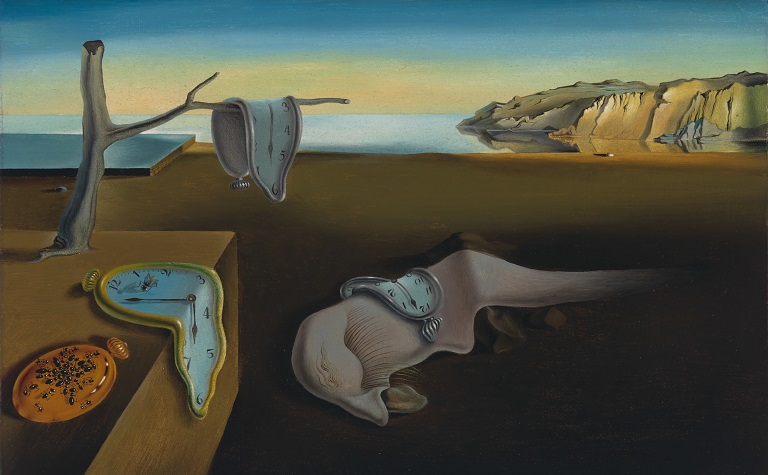
Dalí’s most famous painting, The Persistence of Memory portrays clocks, hard objects in reality, becoming inexplicably melting and bendable. Showcasing time as literally bending, and the creature positioned across the centre of the canvas to be simultaneously melting, sleeping and even dying, this piece epitomises the paradoxical artistic approach of Surrealism. Popularly known as his hand-painted dreams, it brilliantly depicts his irrational visions and dreams in an implausible and realistic manner.
-
The Treachery of Images (1928) by Rene Magritte

Featuring a simple wooden pipe, The Treachery of Images is one of the most iconic works of the Surrealist movement. Under the image of the pipe is the text “Ceci n’est pas un pipe” (meaning ‘this is not a pipe’). Deeply inspired by metaphysical philosophy, this creation of Magritte offers a paradox — art versus reality — what can be seen is a pipe, but his contradictory words highlight the deception of art wherein it's a mere representation of the object.
-
Object (1936) by Meret Oppenheim
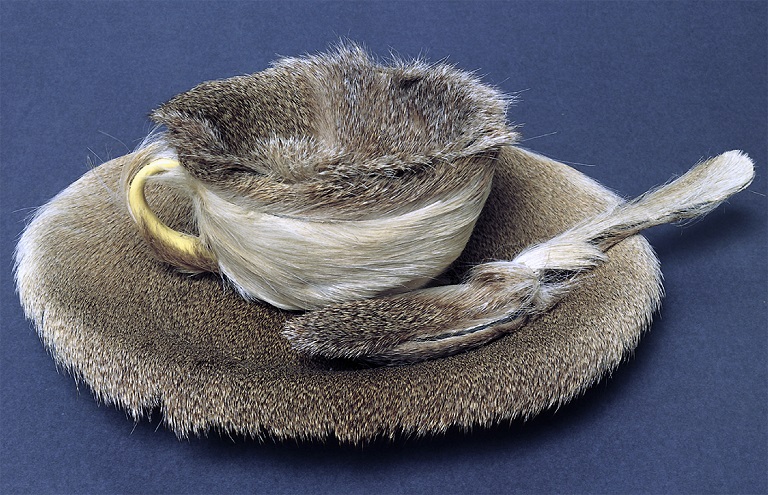
Inspired by a simple conversation with Pablo Picasso and Dora Maar, Object by Meret Oppenheim features a fur-covered cup and saucer. Admiring Oppenheim’s fur-covered bracelet, Picasso casually commented that one could cover anything with fur,to which Oppenheim replied: “Even this cup and saucer.” Accepting André Breton’s invitation to participate in the first Surrealist exhibition of objects, she bought a cup, saucer and spoon and draped them with the fur of a Chinese gazelle. Thus, cleverly transformed the delicate, dainty everyday objects into something more sensual and sexual.
-
l’Heure de l’Observatoire: les Amoureux (1932-1934) by Man Ray
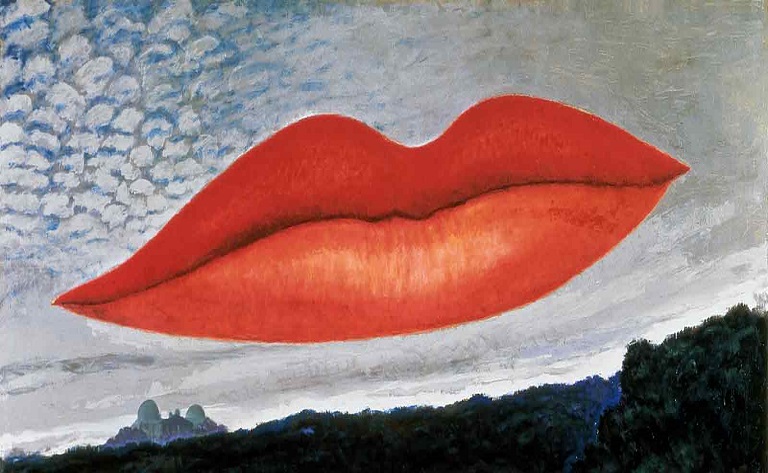
Depicting the sensual red lips of Lee Miller, his former lady love and protégé, this is one of the most famous Surrealism paintings. Painting it after their relationship ended in 1932, the gigantic red lips depicted floating in the sky also represent the bodies of the two lovers- Man Ray and Lee Miller.
-
The Hunter (Catalan Landscape) (1924) by Joan Miró
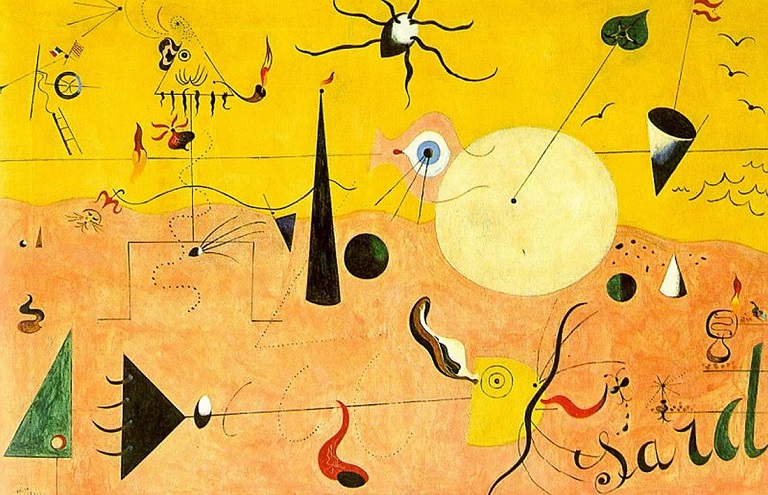
The Hunter by Joan Miró depicts a surrealist landscape inspired by his native place of Catalonia. The surreal landscape is composed of strange triangular shapes, orbs, and disembodied human and varied animal forms. The whole set up is so unreal with forms and figures hovering, floating that the only truly recognizable organisms in the painting are the birds. In the front, the inscription ‘sard’ is visible, short for ‘Sardana’, Catalonia’s national dance.
-
The Wounded Deer (1946) by Frida Kahlo
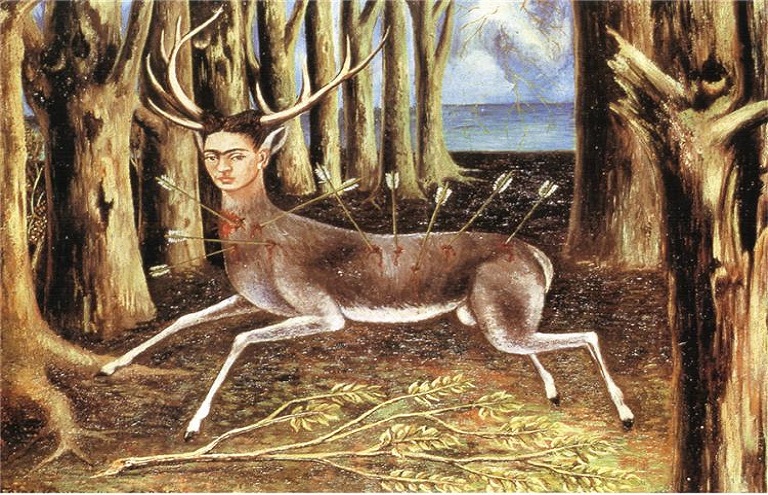
This masterpiece by Frida Kahlo depicts her like a wounded deer, punctured by several arrows. As she painted it after an unsuccessful spinal surgery in 1946, it is a self-portrait wherein she recreates herself as a hunted half-stag, half-human, and shares her suffering and pain with the viewer. Her preference to represent herself as a stag is often seen as a reference to her bisexuality.
The Present Times
Today, Surrealism is seen as one of the most influential movements of the 20th century. In addition to introducing the audience to the realm beyond conventional artistic and moral values, it exerted an enormous impact on the cultural life of many countries. The pioneering artists clearly exhibited that their ability transcended traditional fine art forms and rationalism.
Today, not only the iconic works of this genre are housed at the prestigious museums but several galleries offer prints of Surrealism paintings for sale. This genre has deeply influenced contemporary art as well, many artists of this generation continue to keep the Surrealist tradition alive no matter the medium through their imaginative often bizarre paintings rooted in the subconscious.
















